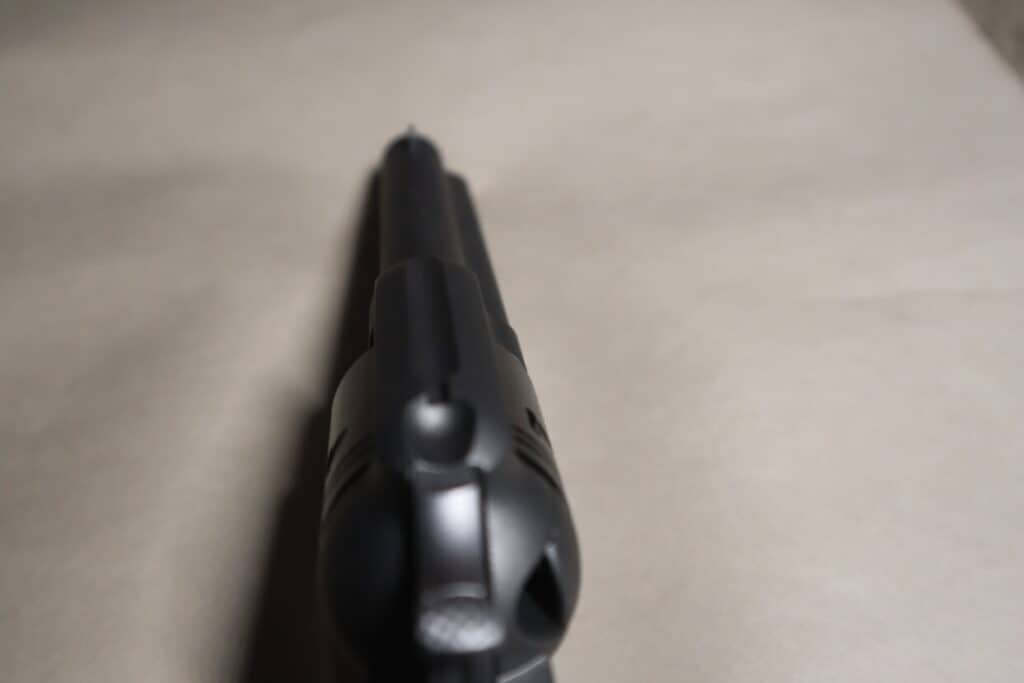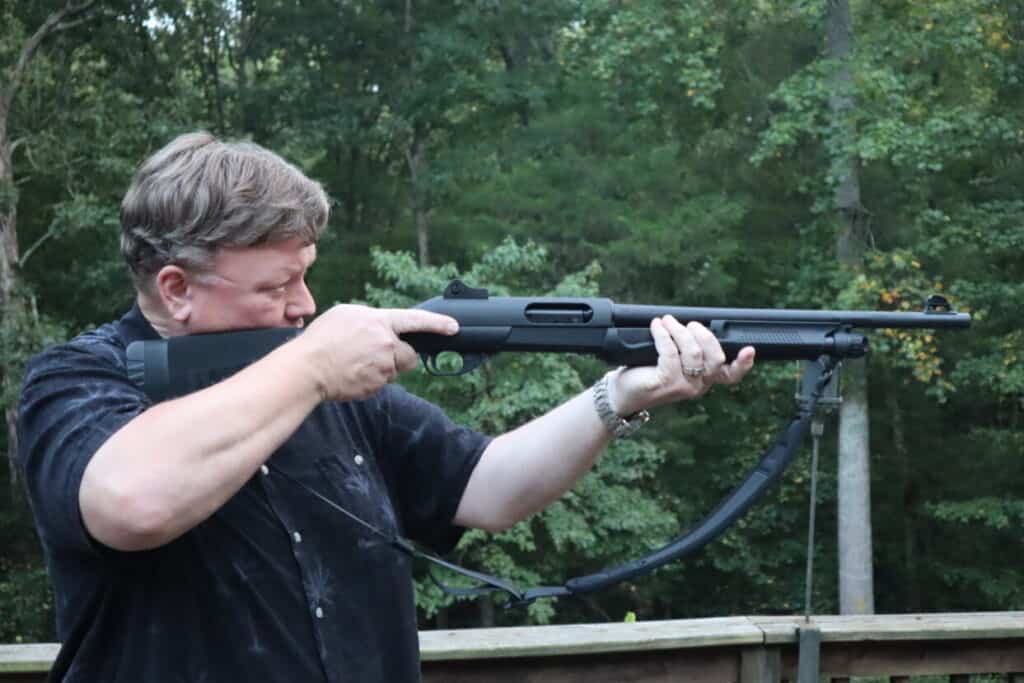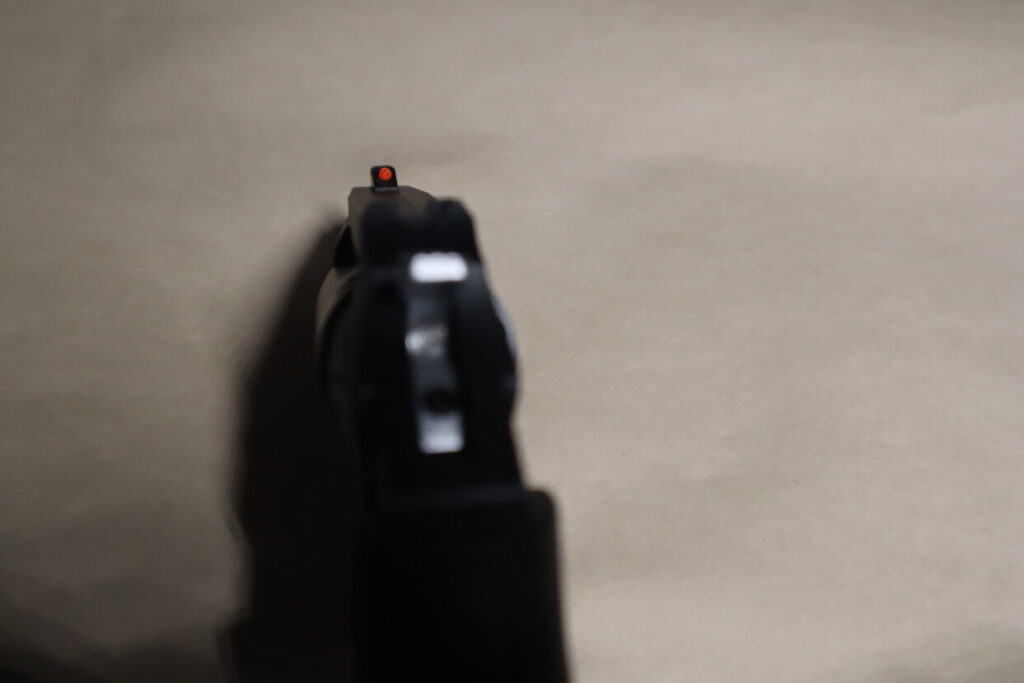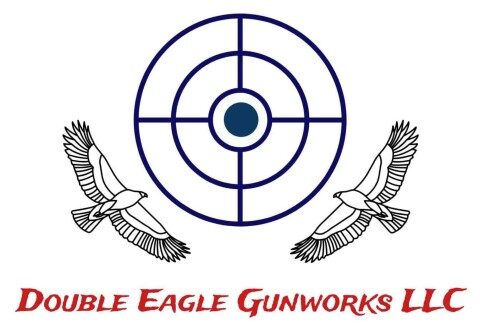Ideally, you have all the time you need every time you shoot your gun. In reality, that is unlikely to be the case in a defensive shooting situation. You have to learn to aim in a way that befits the circumstances in which you find yourself.
Point shooting is aiming your gun by following the line of your hand. The gun in your hand is an extension of your index finger, and you shoot in the direction you are pointing. This is the fastest way to get off a shot.
Quick sighting means taking a cursory glance over the metal sights on your gun before taking the shot. It is the median point between quickly dashing off a shot and meticulously preparing to shoot.
True sighted fire occurs when you take the time to focus your vision on the gunsights and prepare yourself mentally before you take a shot. You use true sighted fire when you have one opportunity and you can’t afford to miss, or when you are out on the range improving your skills.
Accuracy Versus Speed
How much time you spend aiming your gun depends on what you need to accomplish. If you want to get that perfect bullseye, true sighted fire is the way to go. If an armed bandit is rushing toward you, speed is paramount and point shooting is the best choice. In a fast moving but less volatile situation, such as a friendly competition with your friends, you need to balance speed against accuracy; quick sighting is the option to choose.
Point Shooting
Point shooting is exactly what it sounds like: You extend your arm straight out in front of you at eye level with the gun in your hand. You take the shot without further attempts to refine your aim.
Point shooting is helpful in an emergency: a human or animal attacker is heading your way at a fast rate and you are about to be mauled. Because the mass of your attacker is aimed directly at you, there’s a pretty good change you will hit something vital and stop the threat.
Taking the time for the niceties in this case will get you tackled or eaten, so the loss of accuracy is compensated by the increased speed that will save your life.
Point shooting is the fastest sighting method, making it ideal for an emergency involving a fast-charging assailant.
Sometimes a cursory aim is not enough. Point shooting is too dangerous if there is anyone in the vicinity of your target or in a fast moving environment when someone else is likely to cross between you and the target.
Extend your shooting hand in front of you with index finger extended on the muzzle of the gun. Follow the visual line you have made to the target you want to shoot. Squeeze the trigger as soon as your finger is pointed at center mass.
Quick Sighting

If you can’t do a leisurely sighting but you aren’t being attacked, quick sighting will serve your purpose. Raise the gun to eye level and focus on a point ahead of the iron sights. You can only focus on one thing at a time, so the sights will look fuzzy. Just use them to get a general reading of where the gun is aimed before pulling the trigger.
Use quick sighting when you are in a hurry but you still need a modicum of accuracy to achieve your goal.
Quick sighting approximates the speed of point shooting but approaches the accuracy of trued sighted fire. With quick sighting, you are sacrificing speed to get on target and yet you still are not at the highest level of accuracy.
True Sighted Fire

Guns are equipped with iron sights to get the best accuracy possible by placing your shot consistently at the best point to hit the target. Even better accuracy comes with aids such as scopes and laser sights. I have written a wealth of articles about how to take advantage of technology to improve your aim.
Aim the gun by looking down the barrel. The manufacturer will have given visual cues to predict the trajectory of the bullet. My Ruger LCR has a groove that starts in front of the hammer and ends with a raised area at the tip of the barrel. You may have red or white dots to guide you.

Align the top of the front sight with the top of the rear sight. Focus on the front sight. Keep the blade of the front sight in the middle of the notch for the rear sight.
Practice All Three Methods
Establishing proficiency with a gun is all about practicing. Establish muscle memory for all the ways you might need to use your gun so that you aren’t learning as you go in an actual defensive situation.
Include some plinking time in your target practice. Plinking is casual shooting just for fun. Line up a row of soft drink cans and see how many you can hit with point shooting.
Move on to a steel target and use quick sighting to make the metal ring when you hit it.
Get out your paper target and try for a bullseye with a true sighted fire.
If you can’t find ammunition, obtain a SIRT Pistol from Next Level Training and let it give you feedback using all three sighting methods. Be sure to use our “carla-pittman10” discount code to get 10% off your purchase.
Thanks for reading my blog. . Watch our YouTube channel for tips on all things gun related.


